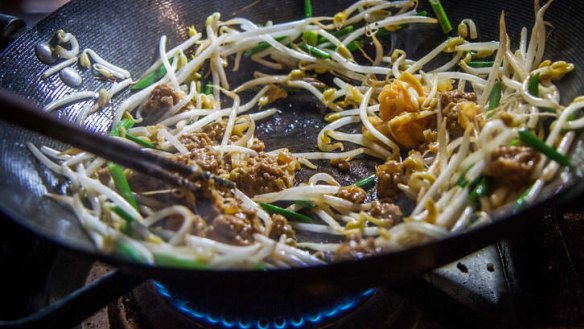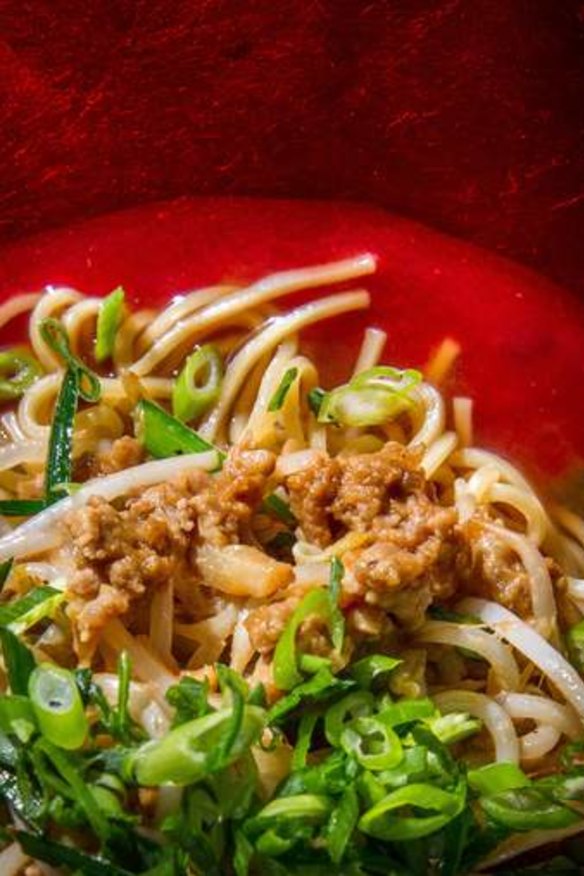Miso ramen recipe: How to use your noodles

As part of my ongoing and delayed coverage of the World Cup, I’m pleased to announce that we won! Yep, we won the World Cup ... only it’s not the World Cup that media are covering. They are spending most of their energy and time reporting on a sport that we have slightly less chance at winning than a low lying pacific island has of getting Tony Abbott PM to pay them a visit to discuss climate change, knee deep in their rising water.
So, on the day after the Kookaburras, that’s our national hockey team, won - and indeed, the women’s Hockeyroos team only just lost their title match the day before – all I could find was how unlucky the Aussie soccer team was at losing their first game and how tough their draw is, and how unfair it was and Chile was the "easy" team.
No question though, sport at this level is a great spectacle and I’ll continue my focus on food from participating countries. I really should be looking at Dutch food seeing as we seem to be playing them in a lot of games at the moment. However, as grand a country it is, food-wise I think they have potatoes and herring. And seeing as I’m knee deep in Japanese cook books, let's do them.

The whole Japan playing soccer thing just seems weird to me, not because of their abilities but more about their footy crowds. Rather than, say the English, likely to destroy the stadium after losing a game at this level, the Japanese fans just quietly helped tidy up the stadium.
This neatness and orderliness is seen in the food of Japan. One of the most difficult to master, indeed for all intents impossible. Japanese food is dominated by recipes that are on the surface very simple but the techniques and ingredients involved are, respectively, bloody hard and impossible to find.
So I bought these books to help me find out more about this intriguing country. The first is Richard Hosking’s A Dictionary of Japanese Food. This is a surprisingly small and is a book with an edgy absurdity. For instance, in his entry for iwatake (rock mushroom - sometimes called rock tripe), he opens, I think, the lid to the giggles box with this gem “...very limited in appeal, it is nevertheless considered a luxury, probably for reasons other than its flavour”. This is a must if you are considering getting deeper into Japanese food than simply sitting watching a sushi train roll past.
Most of these ingredients - such as itadori (japanese knotweed, a green stem), and kamaboko (a kind of cured processed fish, surimi-style) - are not likely to be found here, but for me the book fills in the details when you are wading through Japanese cook books and as I say, is very worthwhile ordering from Amazon or whatever website, shop or vendor you get books from these days.
This has certainly helped in my never-ending journey of discovering Japanese noodles. Every week in our household we have udon or ramen noodles, sometime soba, but I’ve never been very confident as to what sauce goes with what and whether they are meant to be cold or hot. I know it’s a first world problem, this one, but there is something about Japanese food that makes you want to get it right, even if it’s just for the family.
Ramen are the most recognisable. If you’ve ever made two-minute noodles, these are a very simple version of what ramen is to Japan. Like most noodles, they hail from China, only introduced 100 years ago. Ramen, eaten mainly as a street food, is traditionally served with a stock fortified with soy and mirin or, as in today’s recipe, miso.
The most important thing about ramen is this stock, every street seller will have a slightly different version and you can bet that the reason a queue forms each day is because of this part of the dish. They can be quite simple or very complex. A favourite is David Chang’s ramen stock. Based on chicken and pork, plus a bacon kicker, the stock is cooked down for a long time. I’ve included a version using katsuobushi (cured, dried tuna), which makes a lot of stock but you can freeze it for use later.
The ingredient this week that I’m full of new knowledge and appreciation of is miso. A fermented seasoning that goes back one and a half millennia in Japan, very important to their food culture. The main two are based on fermented rice or barley, and soybeans. Generally, red miso is salty and white miso sweet. They can be used in combination the same way soy and mirin are used.
Miso ramen
1 tbsp vegetable oil
300g minced pork
2 tbsp sesame oil
1 onion, chopped
2 tbsp minced ginger
½ cup white miso (shiromiso)
¼ cup red miso (akamiso)
¼ cup tahini (ground toasted sesame seeds)
¼ cup hoisin sauce
1 tspn chilli paste or to taste
3 tbsp Japanese soy
2 corn cobs, steamed, kernels sliced off.
3 cups ramen stock (see recipe)
1 tbsp vegetable oil
1 packet fresh bean sprouts
1 bunch garlic chives, cut into 30mm lengths
4 servings dried ramen noodles
8 spring onions, finely sliced
2 tbsp toasted sesame seeds
Bring a pot of water to the boil for noodles. Have ramen stock on a low simmer in another pot. Heat a large wok with vegetable oil and over a high heat sear the pork, remove, clean the wok and start again with sesame oil, lower the heat. Fry onion and ginger until soft, return pork and stir in miso and tahini, cook for about 10 minutes, stirring and being careful not to burn it. Add hoisin, chilli and soy. Cook for a few more minutes, remove, keep warm and clean the wok. Add noodles to boiling water, cook as recommended on packaging. Heat oil in wok and stir fry sprouts and chives quickly, return pork and add cooked corn, combine and get ready to serve.
Drain noodles and place in four bowls, divide miso between bowls and pour over ramen stock, garnish with spring onions and toasted sesame seeds.
Ramen stock
1 sheet kombu (dried kelp), about 100mm by 300mm, rinsed
4 litres water
10 dried shiitake mushrooms, washed
1.5kg chicken wings, necks or frames (carcass without legs or wings)
2kg well roasted pork bones
1 bunch spring onions
2 onions, quartered
2 carrots, chopped
8 packets katsuobushi
Soak kombu in water for a few hours and bring to a low simmer, add mushrooms and continue simmering for an hour. Remove kelp and mushrooms, add chicken, simmer and skim this for another hour. Scoop out chicken and add roasted pork bones, again simmering, skimming if needed. Cook these for four hours, topping if needed but don’t overly compensate for this slow reduction. In the last hour add the vegetables and finish. Turn off the heat and add katsuobushi, let it steep for 10 minutes then strain everything.
The best recipes from Australia's leading chefs straight to your inbox.
Sign up